
Bismillaher Rahmanir Rahim.
Assalamu Alaikum Wa Rahmatullahi Wa Barakatuhu
Dear Companions Today I want to share with you some words about the evils of killing foetuses.Welcom to this post and congratulations to all
Rice Gourd Cultivation: A Detailed Guide
Rice gourd, also known as Luffa aegyptiaca or sponge gourd, is a tropical and subtropical vine widely grown for its edible fruits and medicinal properties. It is also commonly used for natural sponges when the fruit matures and dries. With increasing demand in culinary and industrial uses, rice gourd cultivation offers a promising venture for farmers and entrepreneurs alike.
Step-by-Step Cultivation Method
Climate and Soil Requirements:
Rice gourd thrives in warm and humid tropical climates with temperatures between 20-30°C.
It prefers well-drained sandy loam soils with a pH between 6.0 and 7.5, though it can tolerate slightly acidic soils.
Adequate sunlight is crucial, so planting in open fields is recommended.
Land Preparation:
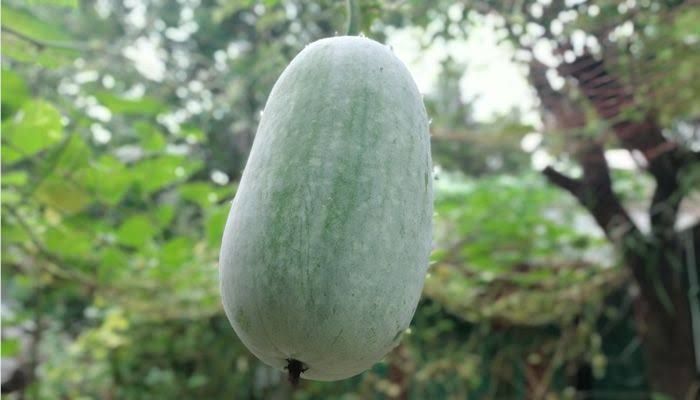
source
Plow the soil deeply to loosen it and improve aeration.
Remove weeds, stones, and debris to promote healthy growth.
Incorporate organic compost or well-rotted manure at 20 tons per hectare to improve soil fertility.
Seed Selection and Sowing:
Select high-quality seeds from certified sources for better yield.
Soak the seeds in warm water for 24 hours to encourage faster germination.
Seeds can be sown directly in the field or started in a nursery. For direct sowing, plant seeds at a depth of 2-3 cm with a spacing of 1.5-2 meters between rows and 1 meter between plants.
Irrigation:
Rice gourd requires regular irrigation, especially during dry periods. Water the plants every 4-5 days after germination to keep the soil moist but not waterlogged.
Drip irrigation is recommended for water conservation and to prevent fungal diseases caused by excess moisture on the leaves.
Fertilization:
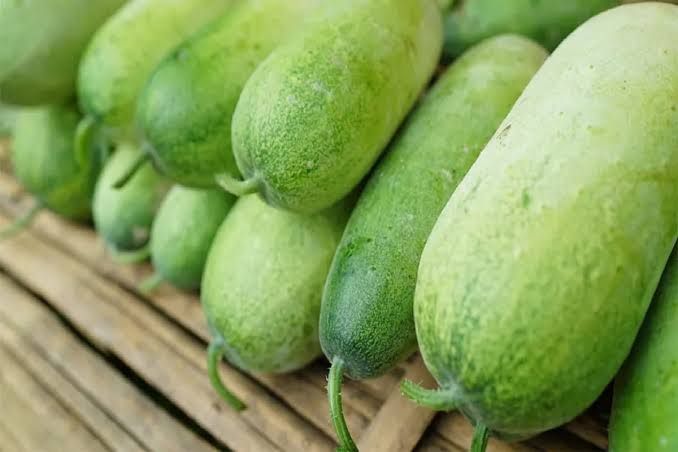
source
Apply a balanced NPK (Nitrogen, Phosphorus, Potassium) fertilizer at a rate of 60 kg/ha of nitrogen, 40 kg/ha of phosphorus, and 60 kg/ha of potassium.
Side-dress with additional nitrogen fertilizer when the plants begin to flower to support fruit development.
Pest and Disease Management:
Pests: Common pests include aphids, beetles, and whiteflies. Use organic insecticides or neem oil to control infestations.
Diseases: Powdery mildew and downy mildew are common fungal diseases. Ensure good air circulation around the plants, avoid overhead watering, and apply appropriate fungicides when necessary.
Training and Pruning:
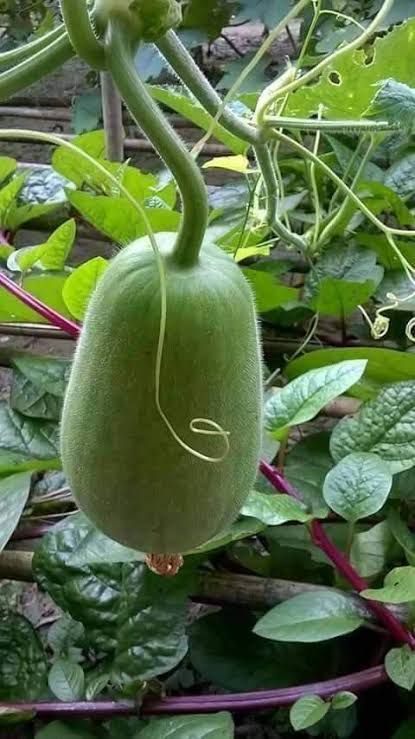
source
Rice gourd is a climbing vine, so it needs support. Use trellises or poles to guide the vines upwards.
Prune side shoots to focus the plant's energy on producing larger fruits.
Harvesting:
Harvest immature fruits for culinary use when they are tender and green, typically 50-60 days after sowing.
For sponge production, allow the fruits to mature fully on the vine until the skin becomes hard and turns brown (about 90-120 days).
Cut the matured fruits and dry them in the sun to remove the outer skin, leaving the fibrous sponge inside.
Rice Gourd Marketing
Target Markets:
Local Markets: Fresh rice gourd can be sold in local vegetable markets or directly to consumers through farmers' markets.
Supermarkets and Grocery Stores: Collaborate with supermarkets to supply fresh, high-quality rice gourd regularly.
Industrial Markets: Matured rice gourds processed into natural sponges can be sold to companies that produce eco-friendly cleaning products.
Online Sales: Sell rice gourd and rice gourd products via online platforms like Amazon, Etsy, or your own e-commerce website. These platforms offer a broader reach to domestic and international buyers.
Value Addition:
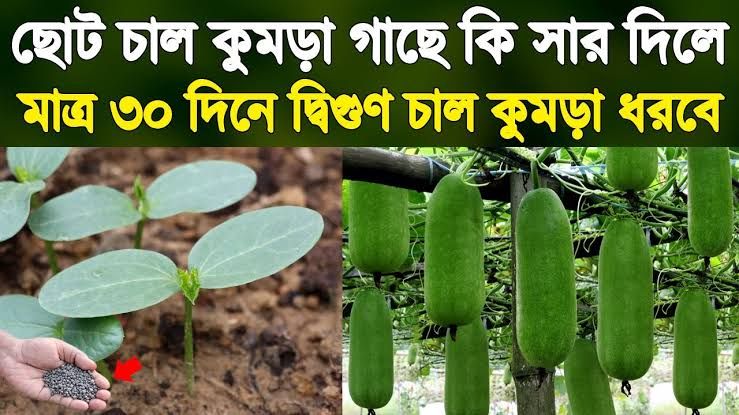
source
Processed Products: Rice gourds can be processed into natural loofah sponges for use in bath, skincare, and household cleaning. By processing the gourd, you add value and expand your market options.
Packaging: Invest in eco-friendly packaging, particularly for sponges, to appeal to environmentally-conscious consumers.
Branding and Certification: Create a brand around your product to differentiate it from competitors. Organic certification can boost sales among health-conscious and eco-aware consumers.
Marketing Strategies:
Social Media: Use platforms like Instagram, Facebook, and TikTok to promote your products through engaging visuals and content. Highlight the benefits of natural products over synthetic ones.
Content Marketing: Create a blog or YouTube channel discussing the benefits of rice gourd, how to use natural loofahs, and the importance of sustainable farming practices.
Collaborations: Partner with eco-friendly brands or wellness influencers to market your rice gourd products.
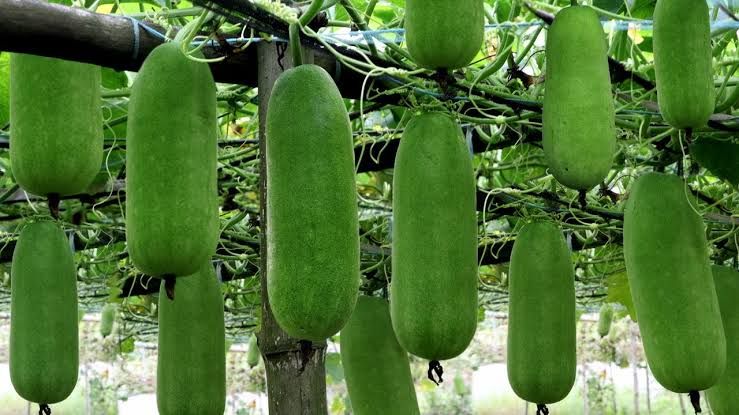
source
Farm Tours and Workshops: Engage with the community by offering farm tours, educational workshops, or hands-on loofah processing classes.
How to Make Profit from Rice Gourd Cultivation
Cost of Production:
Land preparation, seeds, labor, irrigation, and fertilization are the primary costs. On average, the total cost of rice gourd cultivation per hectare is estimated at $1,200 - $1,500, depending on local rates and resource availability.
Yield:
The average yield for fresh rice gourd is around 10-15 tons per hectare.
For loofah production, about 4,000 to 5,000 sponges can be produced from one hectare, with each sponge fetching a retail price of $1 to $5, depending on quality and size.
Revenue:
Fresh rice gourds typically sell at $0.5 to $2 per kilogram in local markets. If you sell 10 tons per hectare at an average price of $1/kg, the revenue will be around $10,000 per hectare.
For loofah sponges, selling 4,000 sponges at an average price of $2 each results in a revenue of $8,000 per hectare.
Profit Margins:
After deducting production costs of $1,500 per hectare, the profit from fresh rice gourd sales could be $8,500 per hectare.
For loofah sponges, with lower processing costs of around $2,000 per hectare (including labor and packaging), you could expect a profit of $6,000 per hectare.
Diversification:
To maximize profit, diversify your product offerings. Sell both fresh gourds and loofah sponges. You could also explore producing rice gourd-based skincare products or eco-friendly packaging to increase profitability.
source
Rice gourd cultivation offers a viable business opportunity with multiple streams of income, from fresh produce to value-added products like loofah sponges. By employing the right cultivation techniques, effective marketing strategies, and efficient cost management, you can ensure consistent profits and sustainable growth in the rice gourd farming business. With the growing demand for natural and eco-friendly products, entering the rice gourd market can be a lucrative and rewarding venture.
Upvoted. Thank You for sending some of your rewards to @null. Get more BLURT:
@ mariuszkarowski/how-to-get-automatic-upvote-from-my-accounts@ blurtbooster/blurt-booster-introduction-rules-and-guidelines-1699999662965@ nalexadre/blurt-nexus-creating-an-affiliate-account-1700008765859@ kryptodenno - win BLURT POWER delegationNote: This bot will not vote on AI-generated content